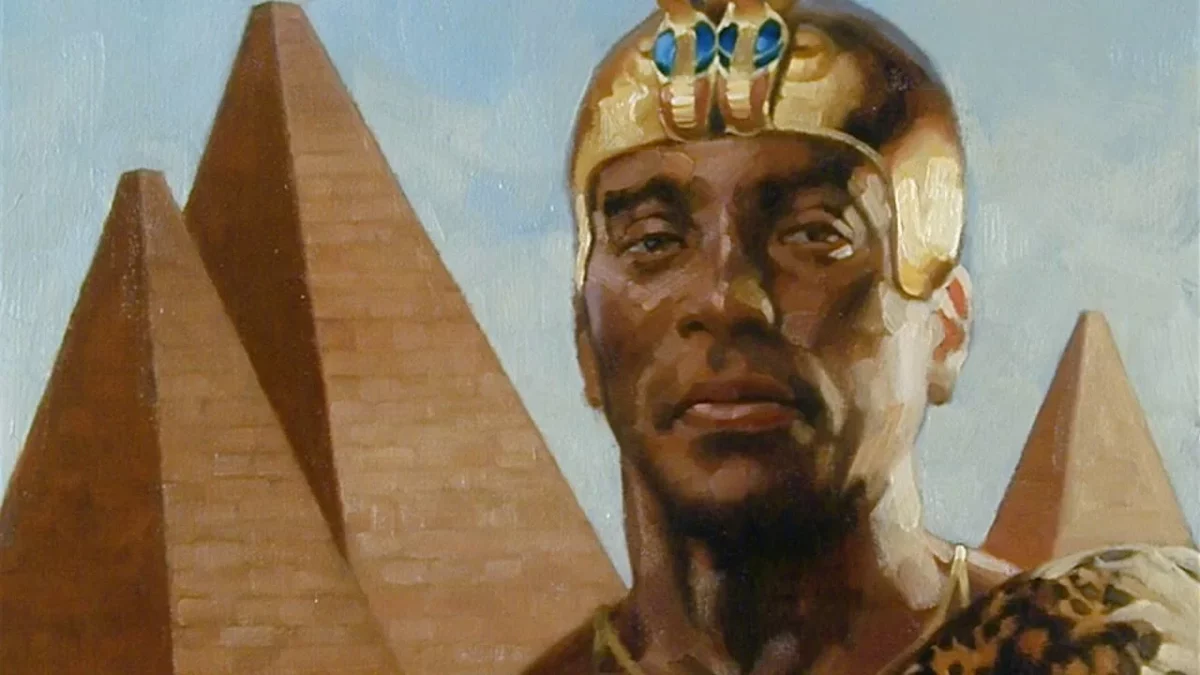King Piye the Nubian Pharaoh and a Kushite king who ruled Egypt from 744 to 714 BC, founded the Twenty-fifth Dynasty. Hailing from Napata in modern-day Sudan’s Nubia region, he was the son of Kashta and Pebatjma. Piye had three or four wives, including Abar, who was the mother of his heir, Taharqa. Notable wives included Tabiry, Peksater, and possibly Khensa.
As the king of Nubia and Upper Egypt, Piye seized the opportunity during the civil unrest in Egypt to expand Nubia’s influence. Tefnakht of Sais, leading a coalition army, sought Piye’s help when besieging Herakleopolis. In response, Piye swiftly assembled an army and invaded Middle and Lower Egypt, gaining control of Thebes and winning a decisive victory at Herakleopolis.
Piye’s military accomplishments remain inscribed on the Victory Stele at Gebel Barkal, showcasing his pride in exceeding his ancestors. After securing victory in the Delta, he sailed south to Thebes and returned to Nubia, never to come back to Egypt.
Despite his triumph, Piye’s authority remained in the western desert oases and Herakleopolis, where a Nubian vassal king ruled. In his second regnal year, Shebitku, Piye’s successor, rectified this by defeating Tefnakht’s successor, Bakenranef.
Piye’s reign lasted around 31 years, and the commemoration happened in his tomb near Jebel Barkal in Northern Sudan. The burial chamber, reached by a 19-step staircase, features Piye’s body on a bed. Four of his favorite horsesa remain interred at the cemetery’s border—a unique honor not seen for over 500 years.
An Egyptian Textile that describes King Piye the Nubian Pharaoh

Significant quantities of linen played a crucial role in the daily rituals conducted in Egyptian temples. Generous donations, often inscribed with the donor’s name, contributed to this supply. Here, the Kushite king Piye gifted a piece of high-quality linen to a temple, likely Amun-Re at Karnak. An inscription column near the fringed edge provides the king’s titles and a fragmented year date, likely representing a year in Piye’s reign.
The year date is not fully preserved, but two symbols for the number ’10’ suggest a date surpassing Year 20. The most probable interpretation is ‘Year 30,’ although ‘Year 40’ has also been suggested. Regardless, this represents the highest-known year of reign for King Piye.
The relatively well-preserved condition of the cloth implies its placement in a tomb. After the gods received their share of food offerings and other items during temple rituals, the remaining items belonged to the priests. When linen cloths became too worn for use, they could be given to priests for burial. Some might even be directly gifted to favored officials by the king.
The Religious Ideology
In essence, King Piye the Nubian Pharaoh conquest of Egypt stemmed from a religious ideology, regarded as an African Renaissance. This was driven by the aspiration to revive the authentic traditions of Kemetic Civilization rooted in the Ta-Seti Culture.
The foundation of Piye’s ideological stance can be traced back to the Ancient Oral Tradition referenced by the Greek Historian Theodore. It indicates that the Nubians were the pioneers in introducing the worship of the Gods in Egypt. Nappata, the capital of Ancient Nubia, retained the custodianship of the original Egyptian Cult of Amun Ra.
Piye, influenced by this ancient narrative, viewed his conquest as a means to restore all of Egypt to its most ancient traditions. The roots of the Cult of Amun Ra among the Kushites find possible explanations in the Pyramid Texts at Saqqara. They depict the pre-history of Ancient Egypt from the era of the Gods.
According to this historical account, considered by some as pure myth, the arrival of the Ancient God Ptah after a great flood started the narrative. Ptah shaped the land of Egypt, which became the homeland of his descendants. They include his sons Amun Ra (The Silent One) and Thoth. These divine figures bring civilization and knowledge to the land and people of Khem.
Piye’s campaign, viewed through this lens, reflects a religious crusade. The purpose includes returning all of Egypt to the ancient religion of the founding gods, initially taught to the people of Khem (Nubia). It later spread to the rest of Egypt.



